Last week the Bonsai Society of San Francisco held their 55th annual exhibit as part of the San Francisco Flower and Garden Show held at the San Mateo Event Center. This was the first time I was able to attend the show in recent years, so I was excited to head down to San Mateo.
For those unfamiliar with the Garden Show, it’s a large event with over 200 exhibitors featuring all things garden-related, including sample display gardens, an ikebana exhibit and BSSF’s bonsai exhibit.
The Bonsai Society of San Francisco is among the older bonsai clubs in the Bay Area. It has a large membership and a strong beginners’ program featuring day-long courses suited to the current season (details at bssf.org).
One can also find great bonsai information on the club website. Club president Eric Schrader has been posting great how-to articles on the site for years. Many of these articles focus on creating bonsai material from scratch, and Eric’s posts about developing pine bonsai are as good as any I know of – I recommend you read them all. If that’s not enough, see more from Eric at phutu.com.
Like so many local clubs, the Bonsai Society of San Francisco includes members from a number of local bonsai organizations. As such, a number of the trees from this year’s exhibit will look familiar. What may not be familiar is how the trees look this time of year.
Here are selected highlights from the exhibit, starting with some of the larger trees on display, including the impressively vigorous black pine below.

Black pine
Below is a twin-trunk coast redwood.
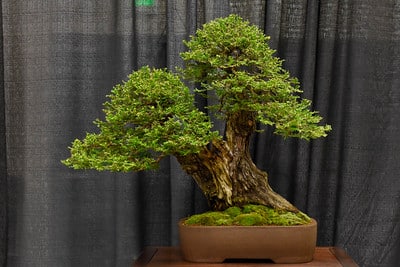
Coast Redwood
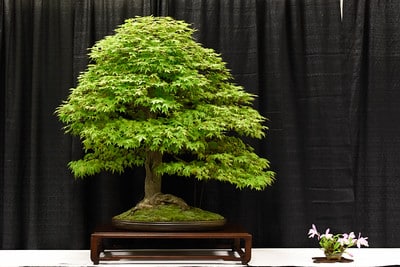
Japanese maple
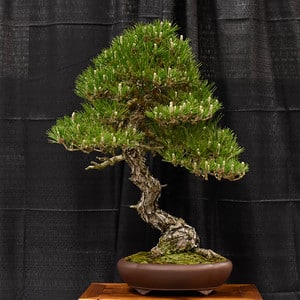
Black pine
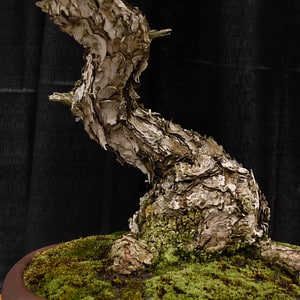
Trunk detail
There are lots of examples of local bonsai improving over time, and BSSF is a good place to see this in action.
Without further interruption, here are more highlights from last week’s exhibit.
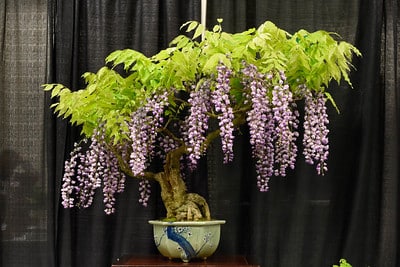
Wisteria
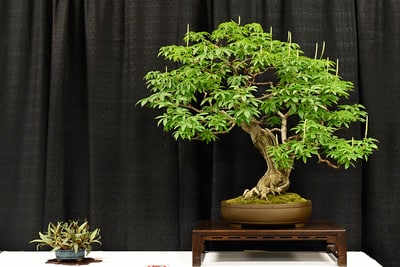
California Buckeye
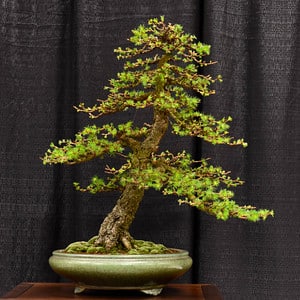
Larch
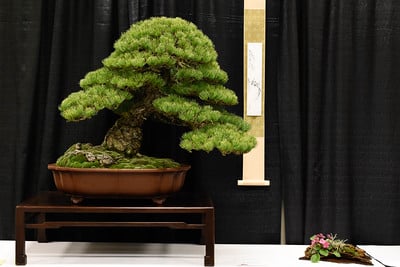
White pine
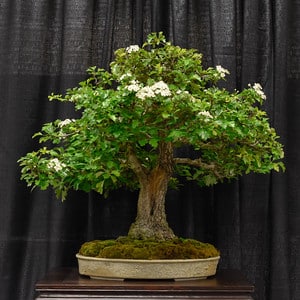
Hawthorn
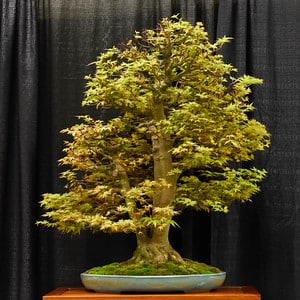
Japanese maple
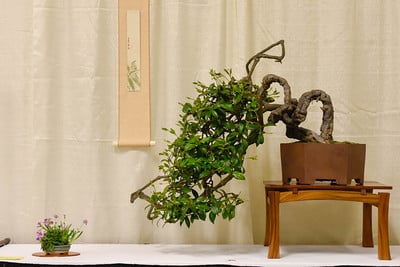
Star jasmine
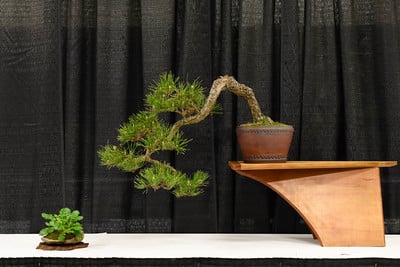
Black pine
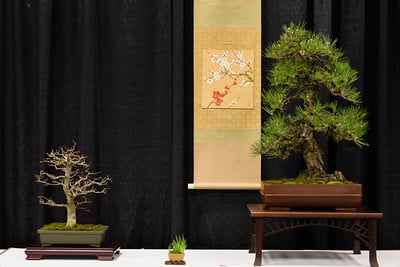
European hornbeam, cork bark black pine
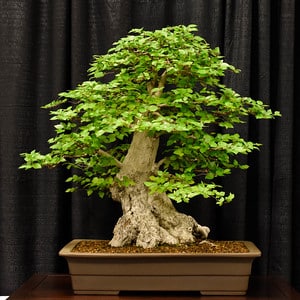
Korean hornbeam
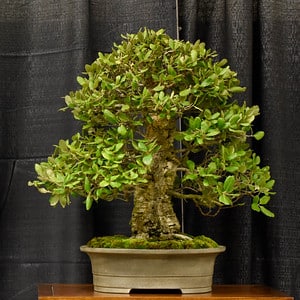
Cork oak
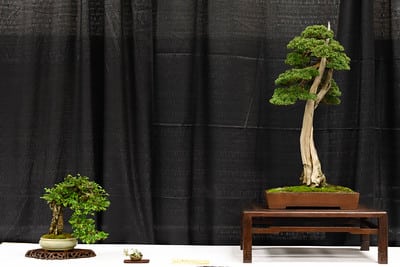
Catlin elm, Shimpaku grafted on California juniper
Each of the trees in this display deserve a little more attention.
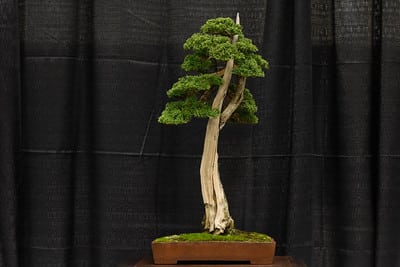
Shimpaku
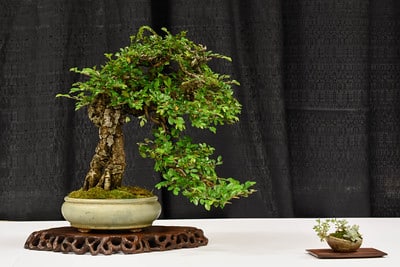
Catlin elm and accent
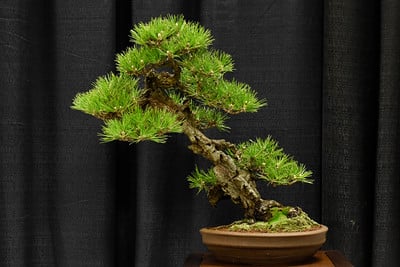
Cork bark black pine
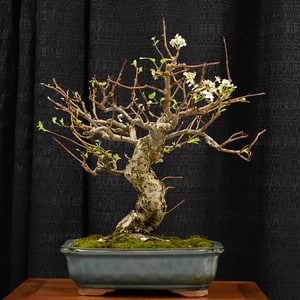
Dwarf Asian pear
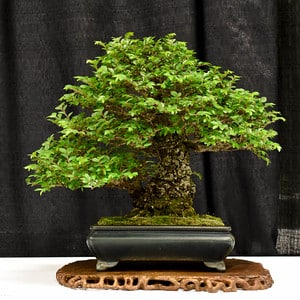
Cork elm
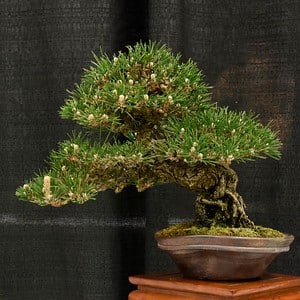
Black pine
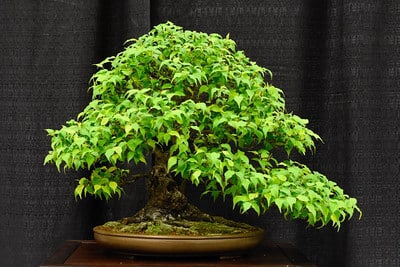
Ume
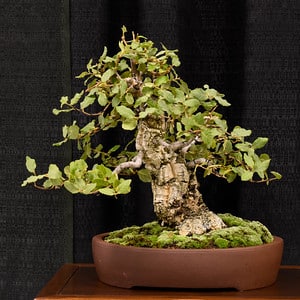
Cork oak
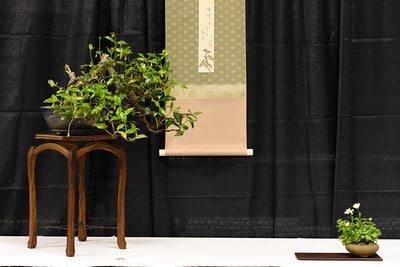
Star jasmine
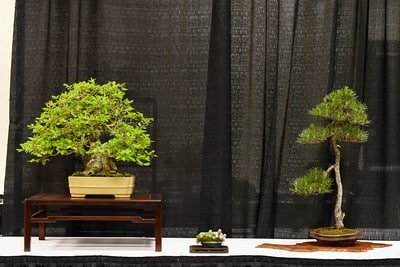
Korean hornbeam, black pine
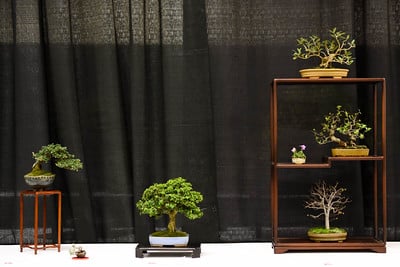
Cotoneaster, Kingsville boxwood, olive, Washington hawthorn, Japanese grey bark elm
BSSF’s exhibit also included some very small bonsai – photos Friday.
Subscribe to Bonsai Tonight
New Posts Delivered Every Tuesday and Friday
Todd says
How does one keep the leaves so small on the Buckeye? I have some, and they are huge. I pinch them back some, but not much, this early in the spring here in Santa Cruz. Those leaves look tiny.
Jonas Dupuich says
Good question Todd – anyone have suggestions?
Eric Schrader says
Well, it may just be an illusion created by the size- Jay’s tree is about three feet tall and equally wide. The spring growth when just opening is slightly smaller, but they open very early, mid-winter really. I know his standard technique for this type of thing is to remove overly-large leaves (as on maples) in favor of smaller ones and to open up the interior of the tree enough for good viewing. I’ve seen larger leaves on a buckeye but these were still easily 4 or 5 inches across.
Todd says
OK, That answers my question.
When I pinch off the new shoots at three sets of leaves, I get leaves that are only about 4″ (If I don’t pinch, they get to be 7 or 8″).
So I guess the answer is have the trees fairly large, so the leaves seem a little smaller.
Thanks a lot.